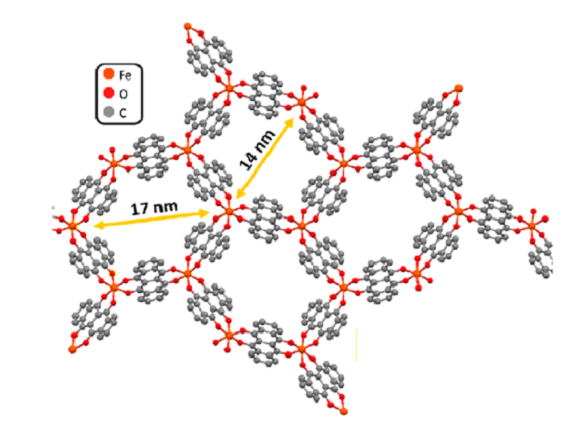Conducting Metal-Organic Frameworks for Supercapacitors
Researchers: Prof Stuart Clarke
We have an interest in preparing, characterising and exploring the uses of metal-organic frameworks (MOFs) that are conducting/semi-conducting. For example, as electrodes for supercapacitors where the high effective surface area and well defined pore/channel size can give very high energy storage capacitires. A MOF is usually some organic ligand held together in a lattice by metal ion coordination.
The figure below illustrates a semi-conducting MOF we have recently prepared with well-defined 1D channels. The crystal structure and conductivity data suggest that the electron transport is through π-π stacking of the aromatic rings of the organic ligand.

More recent MOF crystals are also shown, what we are now awaiting single crystal diffraction data for to consider their structure and properties. (This is the work of several group members over a few years including Surabhi Agrawal, Holly Smith, Constantin Waquet and Rafia Nimal.)

